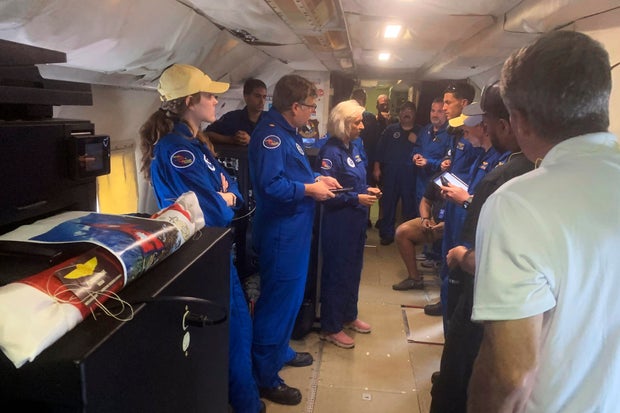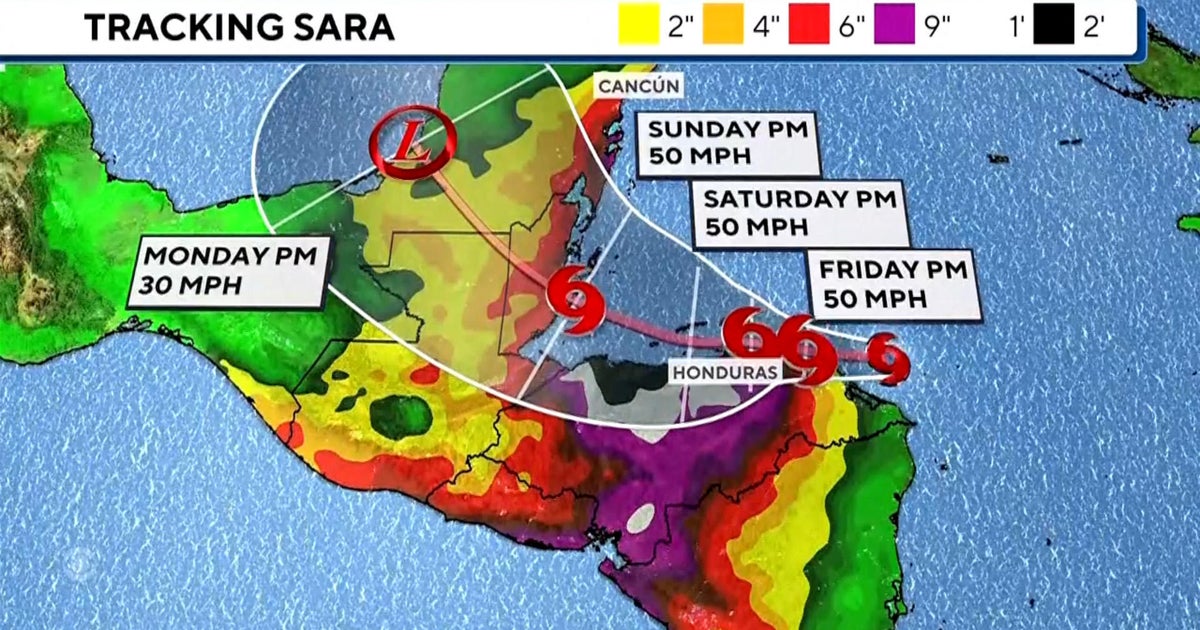CBS News
Renowned scientist’s ashes dropped into eye of Category 5 Hurricane Milton as lasting tribute

As an award-winning scientist, Peter Dodge had made hundreds of flights into the eyes of hurricanes — almost 400. On Tuesday, a crew on a reconnaissance flight into Hurricane Milton helped him make one more, dropping his ashes into the storm as a lasting tribute to the longtime National Oceanic and Atmospheric Administration radar specialist and researcher.
“It’s very touching,” Dodge’s sister, Shelley Dodge, said in an interview Thursday with The Associated Press. “We knew it was a goal of NOAA to make it happen.”
The ashes were released into the eye of the hurricane Tuesday night, less than 24 hours before Milton made landfall in Siesta Key near Sarasota, Florida. An in-flight observations log, which charts information such as position and wind speed, ended with a reference to Dodge’s 387th — and final — flight.
“He’s loved that aspect of his job,” Shelley Dodge said. “It’s bittersweet. On one hand, a hurricane’s coming and you don’t want that for people. But on the other hand, I really wanted this to happen.”
Sim Aberson / NOAA via AP
Dodge died in March 2023 at age 72 of complications from a fall and a stroke, his sister said.
The Miami resident spent 44 years in federal service. Among his awards were several for technology used to study Hurricane Katrina’s destructive winds in 2005.
He also was part of the crew aboard a reconnaissance flight into Hurricane Hugo in 1989 that experienced severe turbulence and saw one of its four engines catch fire.
“They almost didn’t get out of the eye,” Shelley Dodge said.
Items inside the plane were torn loose and tossed about the cabin. After dumping excess fuel and some heavy instruments to enable the flight to climb further, an inspection found no major damage to the plane and it continued on. The plane eventually exited the storm with no injuries to crew members, according to NOAA.
A degenerative eye disorder eventually prevented Dodge from going on further reconnaissance flights.
Shelley Dodge said NOAA had kept her informed on when her brother’s final mission would occur and she relayed the information to relatives.
“There were various times where they thought all the pieces were going to fall in place but it had to be the right combination, the research flight. All of that had to come together,” she said. “It finally did on the 8th. I didn’t know for sure until they sent me the official printout that showed exactly where it happened in the eye.”
Dodge had advanced expertise in radar technology with a keen interest in tropical cyclones, according to a March 2023 newsletter by NOAA’s Atlantic Oceanographic and Meteorological Laboratory announcing his death.
The newsletter said colleagues were “saddened by the sudden and tragic loss of one of its longtime meteorologists,” who died peacefully on March 3.
He collaborated with the National Hurricane Center and Aircraft Operations Center on airborne and land-based radar research. During hurricane aircraft missions, he served as the onboard radar scientist and conducted radar analyses. Later, he became an expert in radar data processing, the newsletter said. He received a Department of Commerce Bronze Medal, two NOAA Administrator Awards and the Army Corp of Engineers Patriotic Civilian Service Award.
Dodge’s ashes were contained in a package. Among the symbols draped on it was the flag of Nepal, where he spent time as a Peace Corps volunteer teaching math and science to high school students before becoming a meteorologist.
Hurricane specialist Michael Lowry shared a photo on social media of the NOAA log noting the ashes were dropped calling it a “beautiful tribute.”
An avid gardener, Dodge also had a fondness for bamboo and participated in the Japanese martial art Aikido, attending a session the weekend before he died.
“He just had an intellectual curiosity that was undaunted, even after he lost his sight,” Shelley Dodge said.
CBS News
What makes a martini a martini?

Nowadays, what makes a martini a martini? Robert Simonson, who wrote a book about the martini, said, “It’s funny: it’s strict and loose at the same time.”
Ten Speed Press
Everyone seems to have an opinion about the cocktail: “Ingredients, proportions, garnishes – it’s all subject to debate,” Simonson said. “I’m a purist. I would think it needs to be gin and vermouth. But I’m willing to bend and say, ‘Okay, vodka and vermouth as well.’ [However,] if there’s no vermouth in there, I don’t know how you can call it a cocktail.”
Simonson says the martini was probably named after a vermouth company. It was invented in America in the 1870s or ’80s when bartenders mixed gin with vermouth, a fortified wine made with herbs and spices. “It’s a very big player in cocktail history,” he said.
In the early 20th century, the “very-dry” martini became very-popular: Ice cold gin or vodka, garnished with a lemon twist, or an olive, or an onion, but only a little vermouth (or maybe not even a little).
Samantha Casuga, the head bartender at Temple Bar in New York City, says the reason why many people might not want vermouth in their martini is because, for years, vermouth was stored improperly. “It should be in the fridge,” she said.
CBS News
Casuga’s classic martini is two parts gin, one part vermouth, with a twist of lemon. She suggests that you probably shouldn’t order it the way James Bond does – shaken, not stirred. Casuga says she’s always stirring, but some people like the show behind the bar when a bartender shakes their cocktail. “Definitely, people love a good shake,” she said.
People also love to have a martini made just the way they want it. But Casuga understands why they might be so specific: “To have your own preferences, not only listened to and then executed, is, like, that’s luxury itself.”
Writer Robert Simonson says that a martini can also add a little luxury to your Thanksgiving. “It actually makes very good sense for Thanksgiving,” he said. “It will whet your appetite for the meal to come.
“There are very few American inventions more American than the martini. So, an American holiday, American drink.”
CBS News
For more info:
Story produced by Mary Raffalli. Editor: Remington Korper.
“Sunday Morning” 2024 “Food Issue” recipe index
Delicious menu suggestions from top chefs, cookbook authors, food writers, restaurateurs, and the editors of Food & Wine magazine.
CBS News
NATURE: Turkeys in South Dakota

Watch CBS News
Be the first to know
Get browser notifications for breaking news, live events, and exclusive reporting.
CBS News
An Italian masterpiece: Cacio e pepe

Watch CBS News
Be the first to know
Get browser notifications for breaking news, live events, and exclusive reporting.











